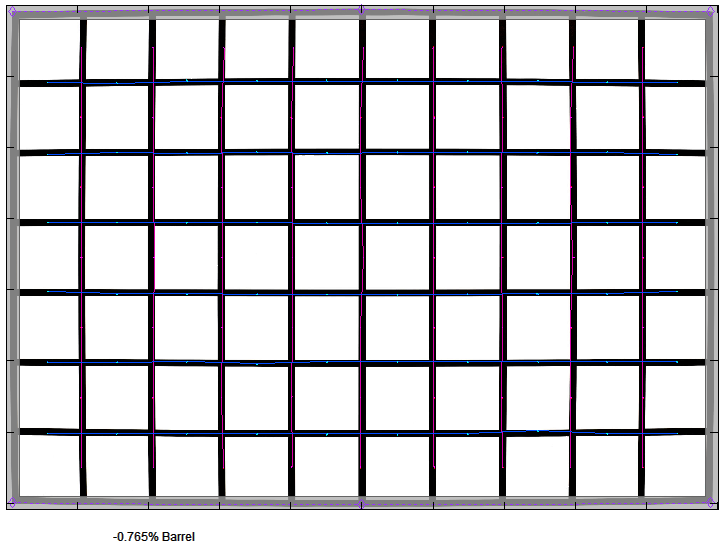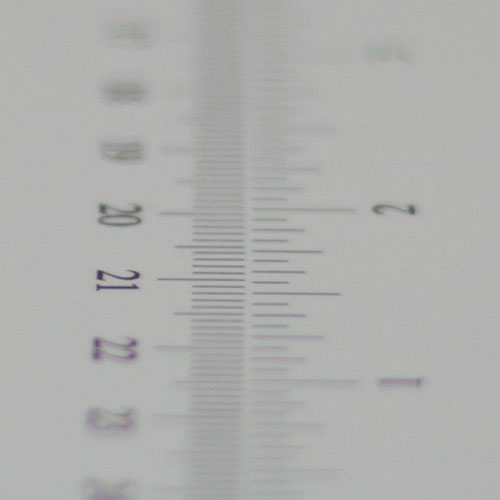|
Canon EF 50mm f/1.8 STM - Review / Test Report - Analysis |
|
Lens Reviews -
Canon EOS (Full Format)
|
|
Page 2 of 3

Distortion
The Canon EF 50mm f/1.8 STM produces a slight amount of barrel distortion. From a real world perspective this shouldn't be a big issue though.

Vignetting
Typical for most fast, full format lenses, the EF 50mm f/1.8 STM suffers from a rather extreme degree of vignetting (~2.6 EV) when used at its max. aperture setting. Unless you're after this effect, you will probably prefer to compensate this either via a camera setting or post-processing. The issue is at least somewhat improved at f/2.2 and much better at f/2.8. However, it takes f/4 till the vignetting is reaching a negligible degree.

MTF (resolution)
Classic 50mm primes tend to be rather soft at max. aperture setting but they get extremely sharp when stopped down to around f/4 or at least f/5.6. This is mostly true for EF 50mm f/1.8 STM as well. However, unlike its predecessor, it is actually very sharp in the image center at f/1.8. The corners/borders have a decent resolution but the contrast falls apart here. The quality increases continuously towards medium aperture settings. The center is already excellent at f/2.8 and there's also a lift in contrast in the outer image regions. The real boost occurs at f/4 with very good borders/corners. The sharpness is outstanding across the image frame at f/5.6. As usual diffraction has am impact beyond f/8 but f/11 remains perfectly usable.
There's a slight degree of field curvature which can have an impact at large aperture settings. The centering quality of the tested sample was good although not perfect.
Please note that the MTF results are not directly comparable across the different systems!
Below is a simplified summary of the formal findings. The chart shows line widths per picture height (LW/PH) which can be taken as a measure for sharpness.
If you want to know more about the MTF50 figures you may check out the corresponding Imatest Explanations

Chromatic Aberrations (CAs)
Chromatic aberrations (color shadows at harsh contrast transitions) are well controlled with an average pixel width of 0.5px or less at the image borders. This is nothing to worry about.

Bokeh
One of the primary usage scenarios for a large aperture lens is to separate the main subject from the background so the bokeh is of major significance. The Canon EF 50mm f/1.8 STM can certainly produce nicely blurred out-of-focus areas due to the sheer power of its large aperture. However, the technical quality of the bokeh in the critical focus transition zone is not a strength of the lens.
Both the back- and foreground blur looks a bit 'smeared' as you can see below. Edges are asymmetrically rendered. We've certainly seen better results that this one.
 The rendition of out-of-focus highlights has been improved thanks to 7 circular aperture blades. However, improved doesn't necessarily mean perfect. Highlights outside of the dead image center show an outlining effect whereas the inner highlight zone is rendered smoothly. In the image corners (not shown), the circular shape deteriorates towards 'cat eyes' but this is a very common issue caused by vignetting. The outlining effect improves when stopping down and the highlights are more harmonious at f/2.8 and f/4. The circular aperture shape remains intact till f/2.8. At f/4 the disc shape is getting a little bit more edgy, more so beyond.
The rendition of out-of-focus highlights has been improved thanks to 7 circular aperture blades. However, improved doesn't necessarily mean perfect. Highlights outside of the dead image center show an outlining effect whereas the inner highlight zone is rendered smoothly. In the image corners (not shown), the circular shape deteriorates towards 'cat eyes' but this is a very common issue caused by vignetting. The outlining effect improves when stopping down and the highlights are more harmonious at f/2.8 and f/4. The circular aperture shape remains intact till f/2.8. At f/4 the disc shape is getting a little bit more edgy, more so beyond.

Bokeh Fringing
Bokeh fringing is a common issue with fast glass. As you can notice below the halos have different colors - magenta (red + blue) in front of the focus point and green beyond.
Just like most other lenses in this class, the Canon shows some bokeh fringing at f/1.8. Stopping down reduces the issue but it remains visible at f/2.8 and it's pretty much gone from f/4 onward.
In addition, the series of images below also illustrate a slight focus shift towards the background when stopping down (residual spherical aberration).
|
Move the mouse cursor over the f-stop marks below to observe the respective LoCAs
|
| f/1.8 |
f/2.8 |
f/4 |
f/5.6 |
|

|
|